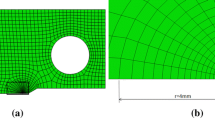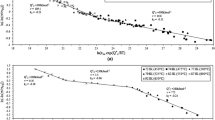Abstract
Creep failure generally occurs either by the attenuative loss of area as flow proceeds (geometrical failure) or by the development of internal cavities. The former mechanism dictates the ultimate creep life of a material. Criteria are developed for this upper limit to life for a variety of creep mechanisms. The effects of both primary creep and necking are discussed and a brief comparison is made between failure criteria for cavitation failure and geometrical failure.
Similar content being viewed by others
References
J. H. Gittus, “Creep, Viscoelasticity and Creep Fracture in Solids” (Applied Science Publishers, New York, 1975).
B. Burton, “Diffusional Creep of Polycrystalline Materials” (Trans. Tech. Switzerland, 1977) p. 12.
J. E. Bird, A. K. Mukherjee and J. E. Dorn, Proceedings of the International Conference on the Quantitative Relation between Properties and Microstructure (Israel University Press, Haifa, 1969) p. 255.
D. Hull and D. E. Rimmer, Phil. Mag. 4 (1959) 673.
W. B. Beeré, in “Cavities and Cracks in Creep and Fatigue”, edited by J. H. Gittus (Applied Science Publishers, New York, 1981).
Author information
Authors and Affiliations
Rights and permissions
About this article
Cite this article
Burton, B. The upper limit to the creep life of solids under a tensile force. J Mater Sci 17, 2441–2448 (1982). https://doi.org/10.1007/BF00543757
Received:
Accepted:
Issue Date:
DOI: https://doi.org/10.1007/BF00543757




